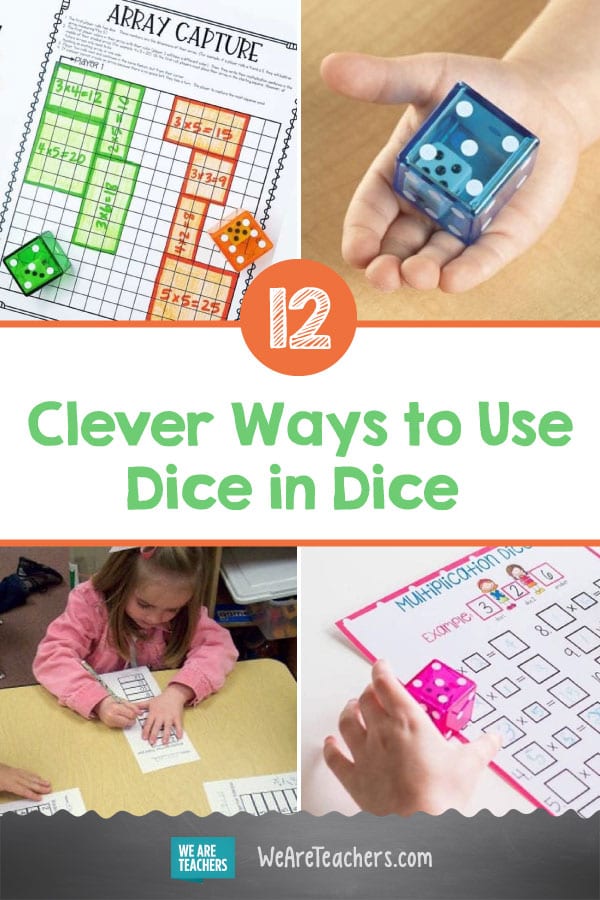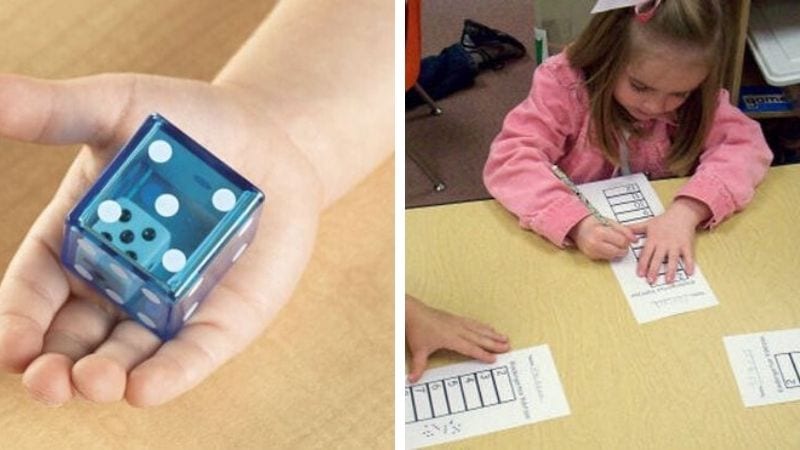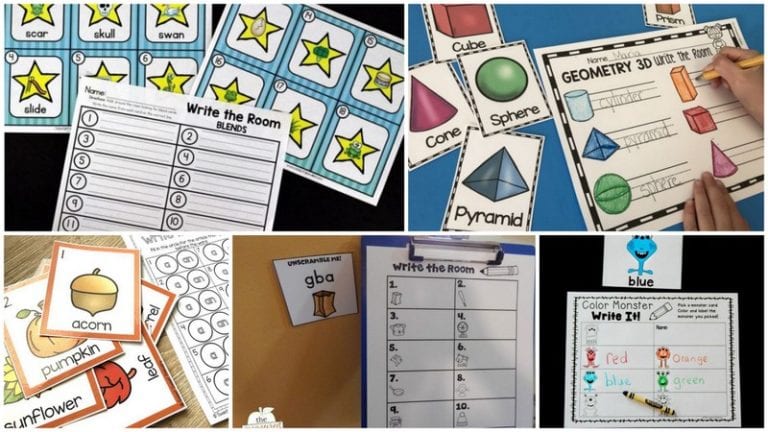Dice in Dice were the most popular item purchased by WeAreTeachers readers last month, and it’s easy to see why. These cool double dice have one small die inside a transparent larger one, and there are so many fun ways to use them in the classroom. We’ve gathered the top 12 clever uses here.
But first … need some double dice of your own? Here are a few of our favorite options:
- 6-Sided Dice in Dice, Set of 72
- 10-Sided Dice in Dice, Set of 72
- Jumbo 6-Sided Dice in Dice, Set of 12
We earn a few cents if you buy using our links, at no additional cost to you. Thanks for your support!
1. Practice counting on.

Counting on helps get kids ready for addition, and double dice games are perfect for some practice! Roll a Dice in Dice cube. Kids start with the number on the larger die, counting on as many as the number on the inside smaller cube. For the dice shown here, the student would say, “5…6, 7, 8, 9, 10.”
2. Roll doubles to race to 100.

This dice in dice game is terrific for giving kids practice writing numbers. The first player rolls the Dice in Dice cube repeatedly until they roll doubles. At this point, they pass the cube to the next player and start writing numbers from one to 100 (or any target number you like). They continue writing until the next player rolls doubles, then stop as the the second player takes the pencil and starts writing their own list. Play continues and the first to make it to 100 wins! Learn more from Shelley Gray.
[contextly_auto_sidebar]
3. Add and bump.

Addition Bump can be played alone or with a partner. Roll a cube and add the two numbers, then cover that number with a marker on the sheet. If the other player already has a marker on that number, you can bump them off! Grab your free printable game sheet from Kindergarten Mom.
4. Play Kindergarten Yahtzee.

Grown-up Yahtzee requires six dice and is a bit complex for little ones. The kindergarten Dice in Dice games version is simple: Each player writes the numbers 2-12 on a piece of paper (or get free printable sheet at Kids Count). On each turn, a student rolls a double dice cube and adds the two numbers. They cross that sum off their sheet, and the next player goes. If the number has already been crossed off, they simply pass the cube on. The goal is to be the first to cross off all the numbers, 2-12. (Play with 10-sided dice to work on addition facts up to 20.)
5. Work on comparing numbers.

Dice in Dice present a surprising twist when teaching kids to compare numbers. There will be a temptation for some kids to think the number on the outside larger die is always “bigger,” so they’ll have to really think about their answer. Get a free recording sheet to use with Dice in Dice games of comparison at Positively Learning.
6. Ditch the flash cards.
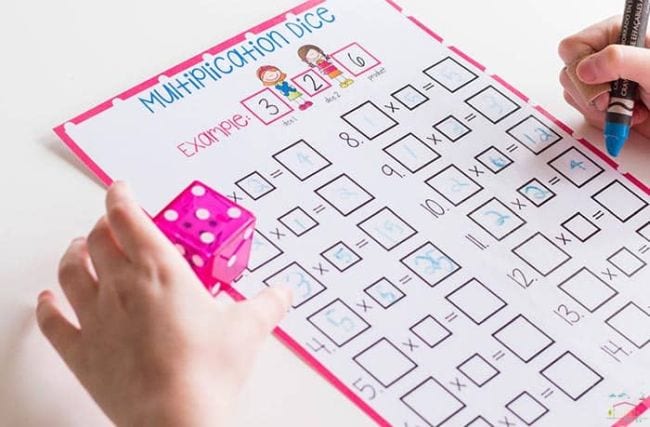
Practicing math facts is a lot more fun with Dice in Dice games. Simply roll a double dice cube, then add, subtract, or multiply the numbers depending on what you’re practicing. Snag a free printable multiplication practice sheet from Life Over C’s.
Bonus Tip: For more advanced subtraction practice, have students subtract the inside die from the outside die, no matter which number is greater. This will give them work with negative numbers.
7. Make some Double Dice Decisions.

There are five rounds in this Dice in Dice game. For each round, a student rolls the double dice cube and decides whether they want to add, subtract, multiply, or divide the numbers. The result is their score for each round. The trick? They can only use each operation once, except for one “Free Choice” option. Get a printable game board to use at Classroom Games/Activities.
8. Master area with Array Capture.

This area and perimeter activity is even more fun as a Dice in Dice game! Learn how to play at Teaching With Jillian Starr.
9. Aim for Target 20.

In this Dice in Dice game, players roll two dice cubes. They then turn each into a two-digit number and add or subtract, with the goal of a sum or difference as close to 20 as possible. Their score for the round is the difference between 20 and their number, with the goal being the lowest score possible. They’ll have to play around a bit with the numbers to find the best solution. Learn more and get a free printable sheet for this activity from Math Coach’s Corner.
10. Battle it out in Double Dice Wars.
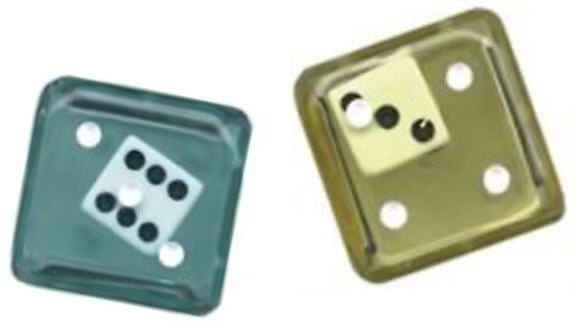
Use double dice to play a new version of the classic card game War. Each player rolls a die. Then, use one of these methods to determine who wins the round and gets a point:
- The player with the largest number on the outside die wins. Ties are broken by the inner die. Or vice versa!
- Players add or multiply their numbers together, and the largest total wins. Ties are broken by the number on the outside die.
- Players subtract the smaller number from the larger. The player with the highest difference wins. Ties are broken by the number on the outside die.
11. Roll, add, and graph.
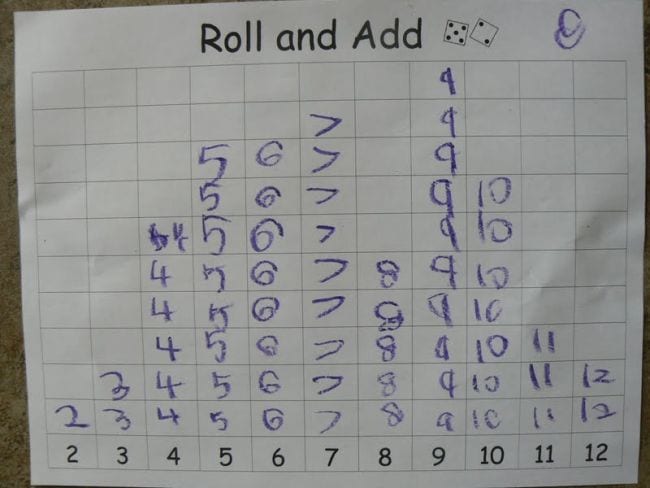
Roll a Dice in Dice cube and add the two numbers. Then graph that number on a line chart, or add it to a bar graph. Get a free recording sheet for this activity from Mrs. T’s First Grade Class.
12. Race “horses” to explore probability.
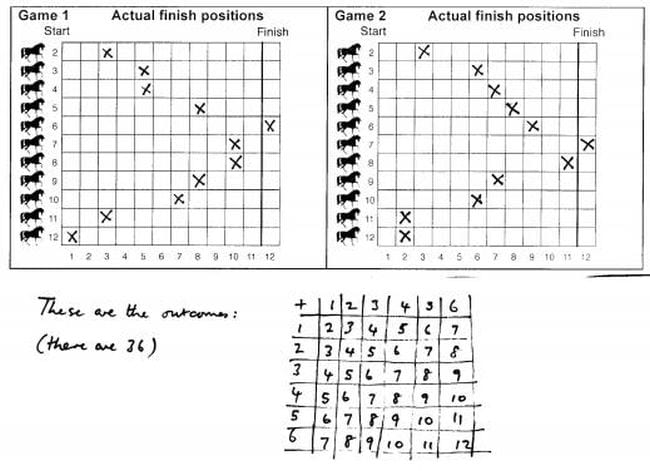
Older students can build on the idea of adding and graphing by incorporating probabilities into the mix. Get a detailed lesson plan for analyzing the results of a double dice “horse race” from the Mathematics Assessment Resource Service.
How do you use Dice in Dice in the classroom? Come share on our WeAreTeachers HELPLINE group. Plus, keep an eye on the WeAreTeachers Deals page to find out when cool teacher tools like these go on sale.
Looking for more ways to engage kids in math? LEGOs are the way to go!
